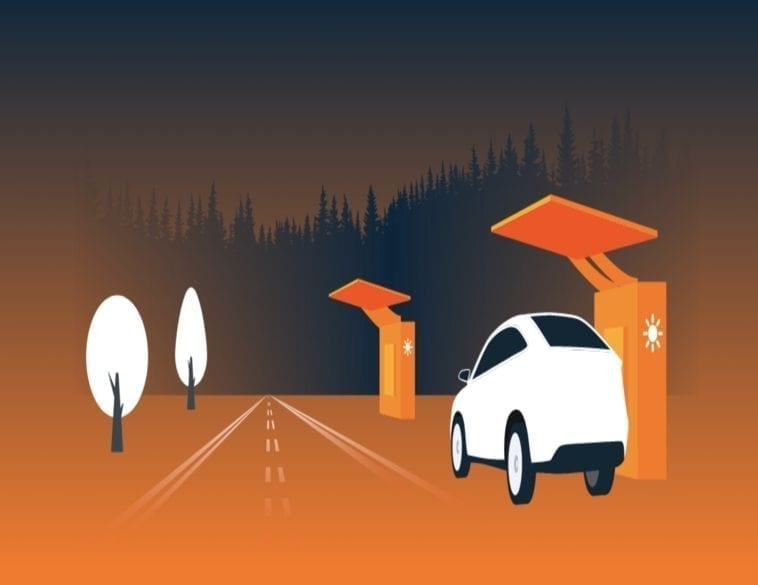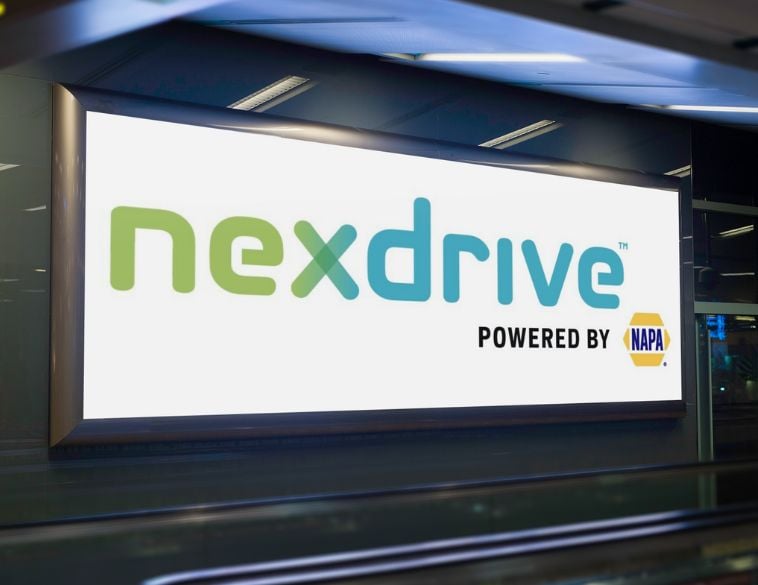Over the past decade, worldwide electric car sales have had close to a 50% gain year-on-year, as consumers work towards reducing global emissions.
As electric car sales rise, so does the demand for charging stations. In 2018 alone, there was a 44% global increase of charging points, bringing the total number to approximately 5.2 million worldwide. Comparethemarket.com.au has created a set of concept images that explore 5 different charging stations that are already in use or in development (fast-charging, solar-powered, wireless, hydrogen fuel and dynamic conductive charging).
-
Fast-charging stations.
The advanced technology used in this type of station means that they are likely to be incredibly useful in and around highly trafficked cities that are supported by a strong energy network. We could expect to see this design accompanied by increased power from the current 250 kilowatts (kW) to a potential 400kW, which is believed to satisfy requirements for most long-distance journeys in around 10 minutes. Fast charging also generates a lot of heat, so we are likely to see liquid-cooling methods used for more advanced fast-charging stations in the future, as it is more effective than air-cooling.
-
Solar charging stations.
This type of charging station provides clean energy for vehicles by supplying their own power. They are likely to be seen in sunny cities that have limited skyscrapers to optimize their performance. Some features include self-powering technology, advanced battery storage for when the weather prohibits the panels from charging, and smaller panel sizes for efficiency.
-
Wireless charging stations.
Although primarily used in hand-held devices, wireless charging technology is currently being developed for use on electric cars. It could be a useful design for people’s homes as well as in public spaces with plenty of car parks. Some of the best design elements include space-saving capabilities and the convenience of not needing to be physically connected to any existing structure.
-
Hydrogen fuel refuelling stations.
This alternative method consists of using a clean energy source in the form of hydrogen fuel cells and converting liquid hydrogen into electricity. As it is a liquid, refuelling with hydrogen takes the same amount of time as petrol or diesel takes to top up. Although it is the most common element in the universe, there are some setbacks to hydrogen refuelling such as less-developed technology and the requirement for tank storage space.
-
Dynamic conductive charging.
Contrary to most station designs which require the vehicle to be stationary, this technology is designed to charge cars as they move along the road. The reduced downtime is the main highlight of this charging type, which has been in trial since 2016 on a test track in Sandviken, Sweden. Similar to hydrogen stations, dynamic charging presents some obstacles, especially surrounding the safety and mobility of the design.



